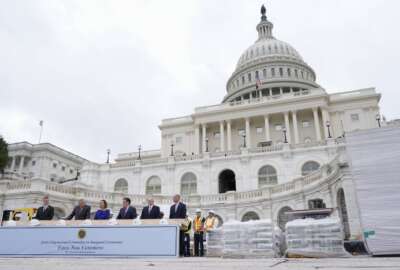Agencies create a STAR to guide science policy
The STAR METRICS will create a reliable and consistent inter-agency mechanism to account for the number of scientists and support staff that are on research...
wfedstaff | June 3, 2015 7:03 am
By Suzanne Kubota
Senior Internet Editor
FederalNewsRadio.com
The STAR METRICS will create a reliable and consistent way to account for the number of scientists and support staff that are on research institution payrolls supported by federal funds.
At least, that’s the goal.
Science and Technology for America’s Reinvestment: Measuring the Effect of Research on Innovation, Competitiveness and Science, or STAR METRICS, and it will be lead by the National Institutes of Health, the National Science Foundation, and the White House Office of Science and Technology Policy.
Julia Lane, program director with the National Science Foundation told Federal News Radio the “data infrastructure hasn’t really existed in the past.”
This came out of a push by the administration for evidence-based policy. There’s massive amounts of investment in science. We believe that that has an impact on competitiveness, on innovation and job creation, and it’s attempting to document the degree of that impact.
With the documentation can come models, data and tools, “in other words a science of science policy, that will help inform and make decisions.”
Lane said the effort can be traced back to comments made by Bush White House science adviser John Marburger III. “He said the health policy debate is pretty well informed by data and by a theoretical infrastructure. Education, financial policy, labor policy: all of those are pretty well informed, but with science policy we don’t really have a good scientific basis for making these massive investments.”
And yet, said Lane, many people believe that investments in science are the key to American competitiveness. Without an understanding of how investments make it through the system, said Lane, “it’s very difficult to make wise investments.”
One advantage of being last to the model table is having data available now on previous projects. That’s what’s being done now at NIH, said Lane. “They take the winning projects and try and work back and figure out what went right. So there are two ways of doing it: one is prospective, the other is retrospective.”
—–
Julia Lane, is the program director for Science of Science & Innovation Policy (SciSIP) at the National Science Foundation.
Copyright © 2025 Federal News Network. All rights reserved. This website is not intended for users located within the European Economic Area.





